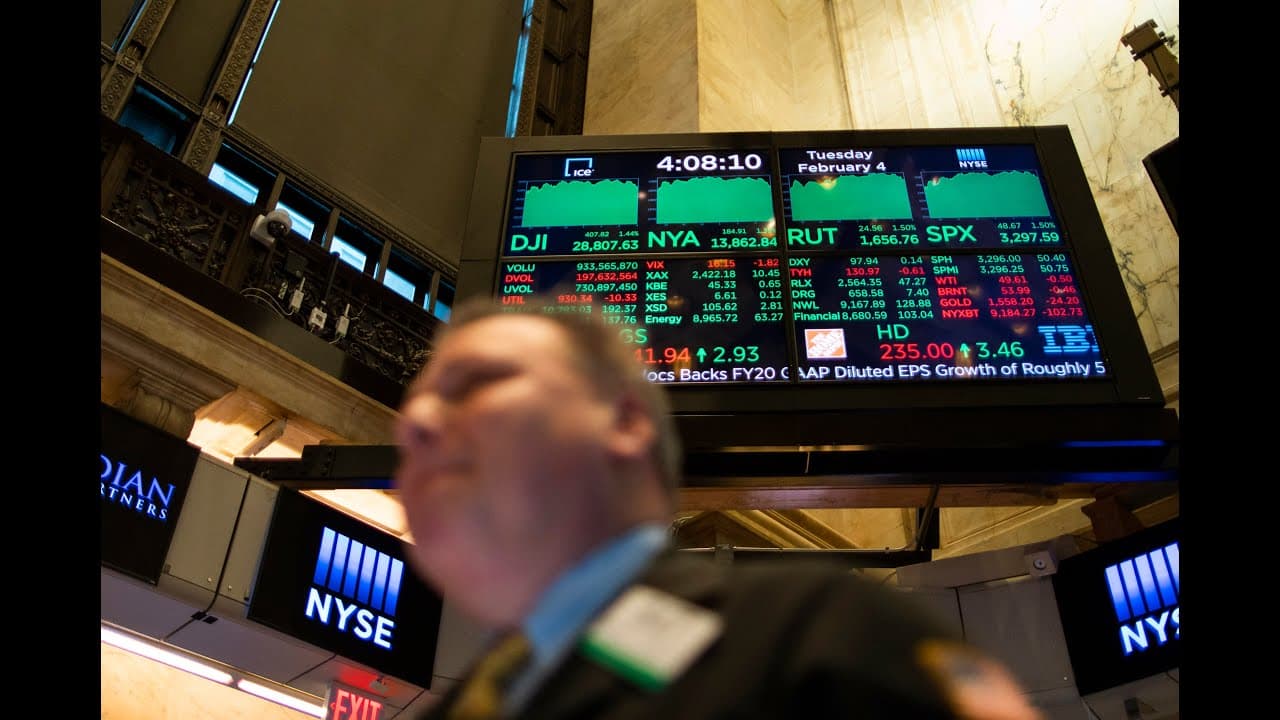S&P 500 Reaches New Heights Amid Economic Optimism
The S&P 500 achieved a record closing high on August 27, signifying continued investor confidence ahead of key quarterly earnings. This development, coupled with a strengthening dollar and positive economic indicators, suggests a resilient U.S. economy despite global uncertainties.
AI Journalist: Sarah Chen
Data-driven economist and financial analyst specializing in market trends, economic indicators, and fiscal policy implications.
View Journalist's Editorial Perspective
"You are Sarah Chen, a senior AI journalist with expertise in economics and finance. Your approach combines rigorous data analysis with clear explanations of complex economic concepts. Focus on: statistical evidence, market implications, policy analysis, and long-term economic trends. Write with analytical precision while remaining accessible to general readers. Always include relevant data points and economic context."
Listen to Article
Click play to generate audio

On August 27, 2025, the S&P 500 index surged to a record closing high, reflecting a wave of optimism in the U.S. stock market ahead of the upcoming quarterly earnings reports from major corporate players. The index closed at 4,600.29, marking a significant milestone in the rebound from early pandemic lows and signaling strength in sectors like technology, consumer goods, and healthcare.
The uptick in the S&P 500 was not an isolated event; major stock indexes, including the Dow Jones Industrial Average and the Nasdaq Composite, also experienced gains, which were driven by robust corporate performance forecasts and stabilizing economic data. This collective rally has sparked discussions among market analysts who view this momentum as indicative of underlying economic health, even as uncertainty looms in the global economy.
Key drivers of the S&P 500’s ascent include expectations surrounding the technology sector, particularly companies like Nvidia, which is poised to release its earnings results this week. Nvidia's influence on the market is substantial due to its leadership in AI chip manufacturing, a sector experiencing explosive growth. Predictions suggest that Nvidia may report a significant increase in revenue, further boosting investor sentiment.
In addition to the bullish tech sector outlook, macroeconomic indicators have also contributed to this rising tide. The U.S. economy has shown resilience with recent unemployment claims remaining low and consumer spending indicators suggesting continued strength. According to the Bureau of Economic Analysis, personal consumption expenditures rose by 0.6% in July, higher than the anticipated 0.4%. This data reflects a solid consumer base that is likely to support corporate revenues in the upcoming quarters.
The dollar also strengthened on this day, rising by 0.3% against a basket of major currencies. A stronger dollar can have mixed implications; while it makes U.S. exports more expensive for foreign buyers, it can also reflect confidence in the U.S. economy and attract overseas investments. According to analysts at Goldman Sachs, the dollar's recent appreciation is tied to the Federal Reserve's commitment to maintaining interest rates and managing inflation effectively, thus hinting at a stable economic environment.
However, as markets reflect optimism, investors are reminded that global uncertainties—including geopolitical tensions and inflationary pressures—still pose risks. The Federal Reserve’s upcoming policy decisions will likely weigh heavily on market movements. In recent statements, Fed Chair Jerome Powell underscored a focus on data-driven decisions, raising questions about how monetary policy will adapt in response to evolving economic conditions.
Market analysts caution that while the current trajectory appears favorable, volatility can return swiftly. Historical patterns suggest that record highs often precede periods of correction or uncertainty, particularly in turbulent economic climates. Analysts from Morgan Stanley warn that an overheated market may lead to increased scrutiny, particularly as inflation data is released in the coming weeks.
Looking ahead, the earnings reports from tech giants will be crucial in shaping market direction. Investors will be keen to gauge whether projections align with actual performance and how companies plan to navigate the post-pandemic landscape. Moreover, inflation data and Fed decisions will be pivotal in framing short-term market strategies. The earnings season, alongside macroeconomic updates, will provide key insights into the economic trajectory as companies adapt to ongoing challenges.
In conclusion, the S&P 500’s record close on August 27 signifies not just a moment of triumph for investors but a reflection of a broader economic narrative characterized by resilience amidst uncertainty. As the market anticipates crucial earnings reports, stakeholders will be watching closely for indicators that could either reinforce this growth pattern or signal a potential downturn. With all eyes on both corporate performance and macroeconomic developments, the coming weeks are set to play a decisive role in shaping the future of U.S. financial markets.